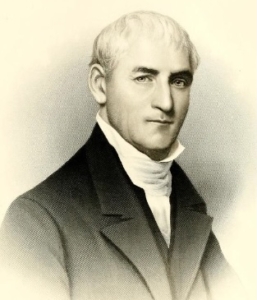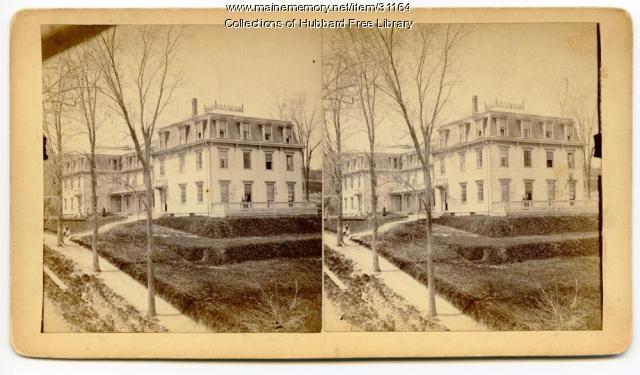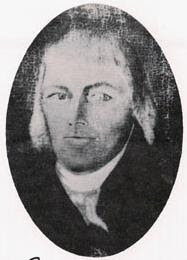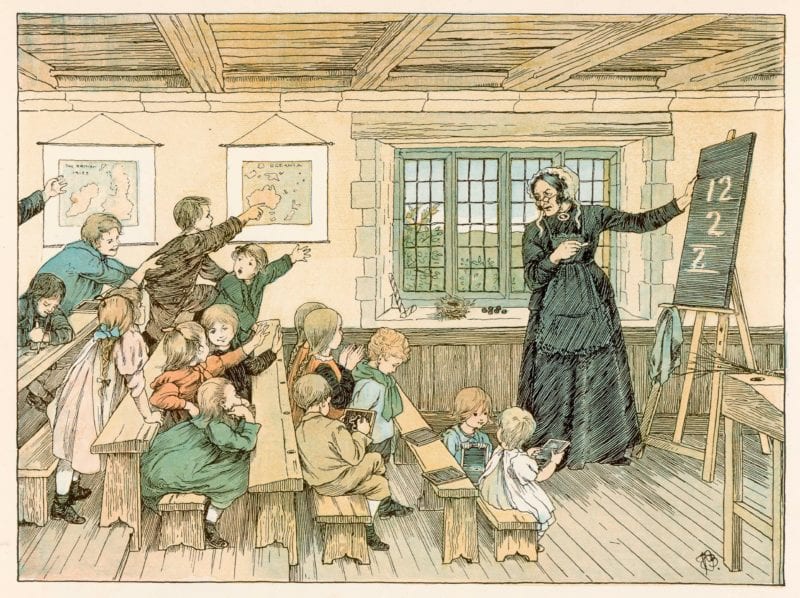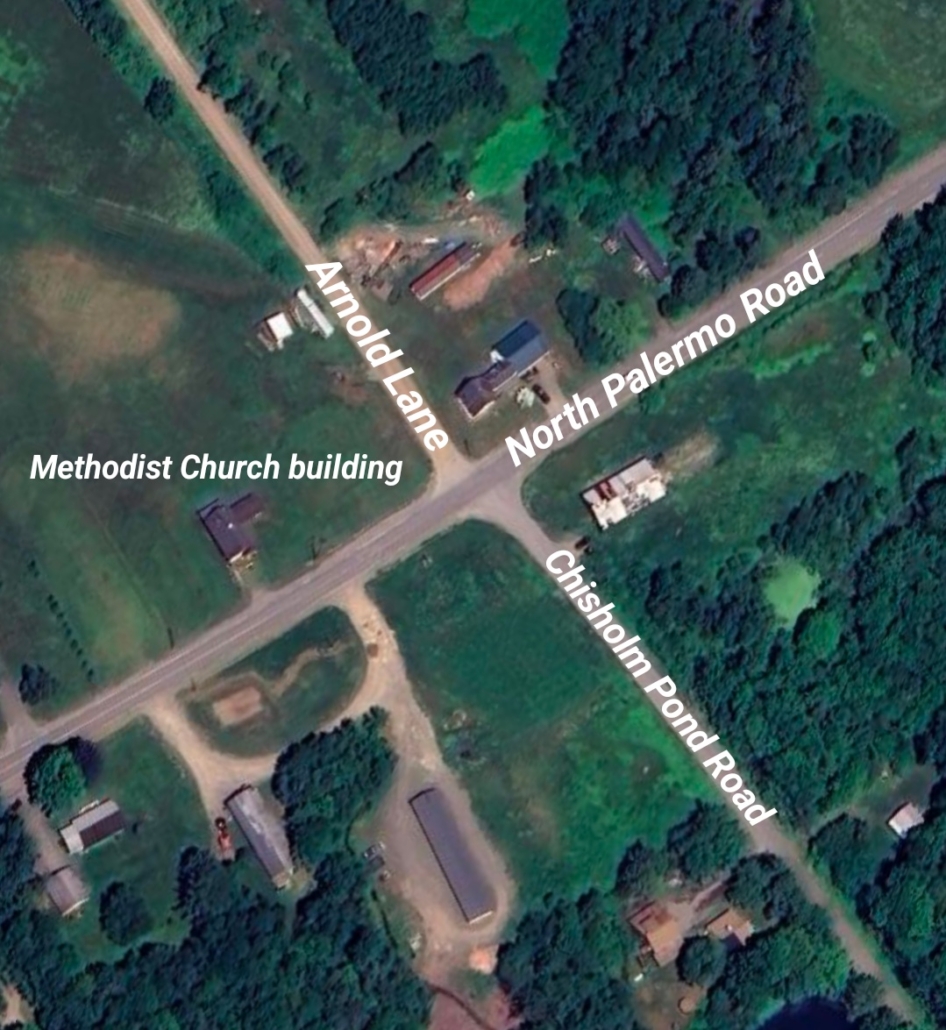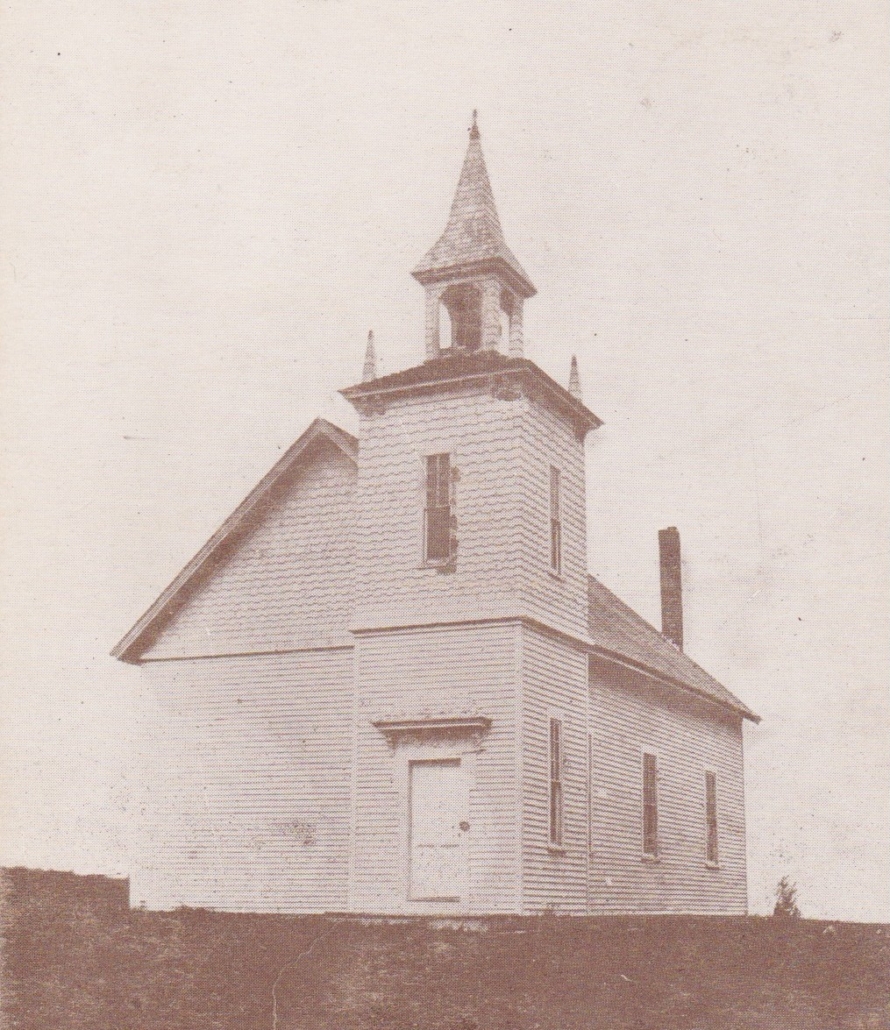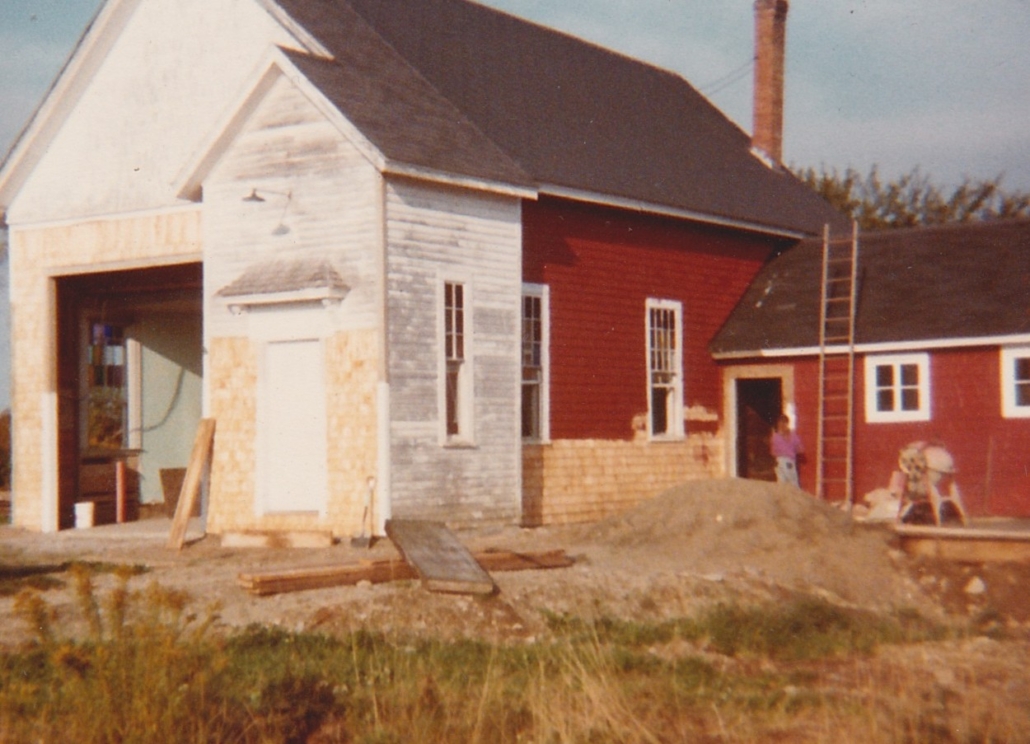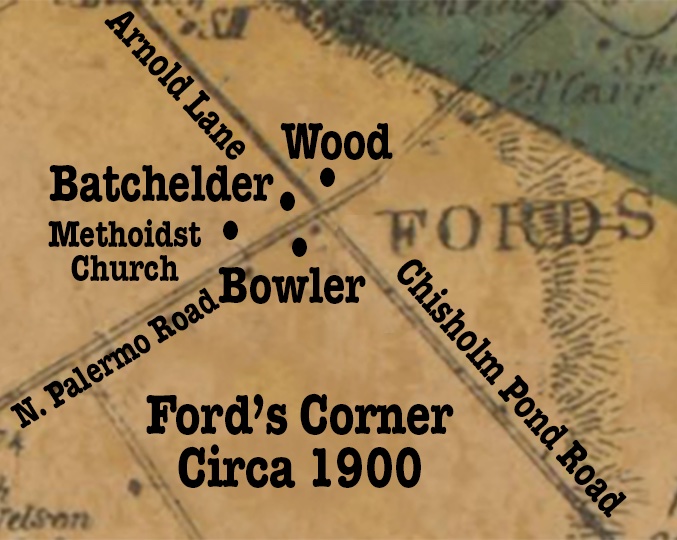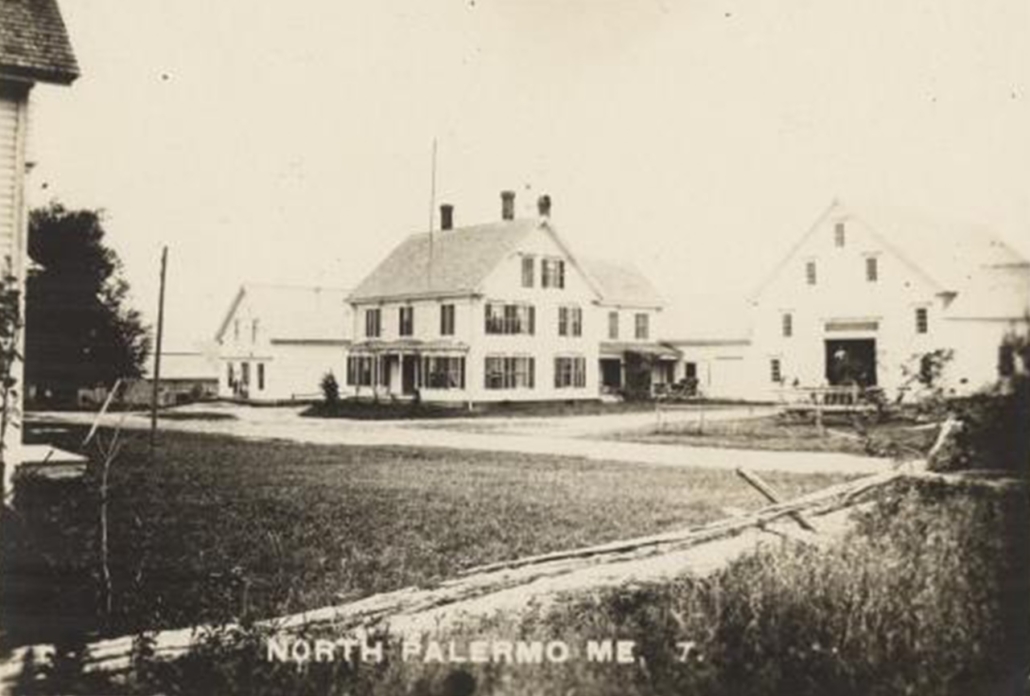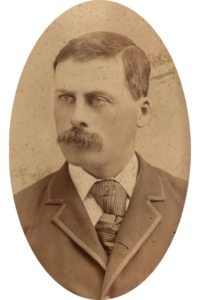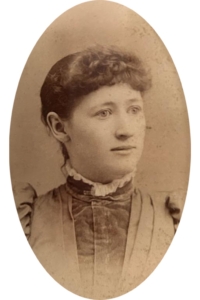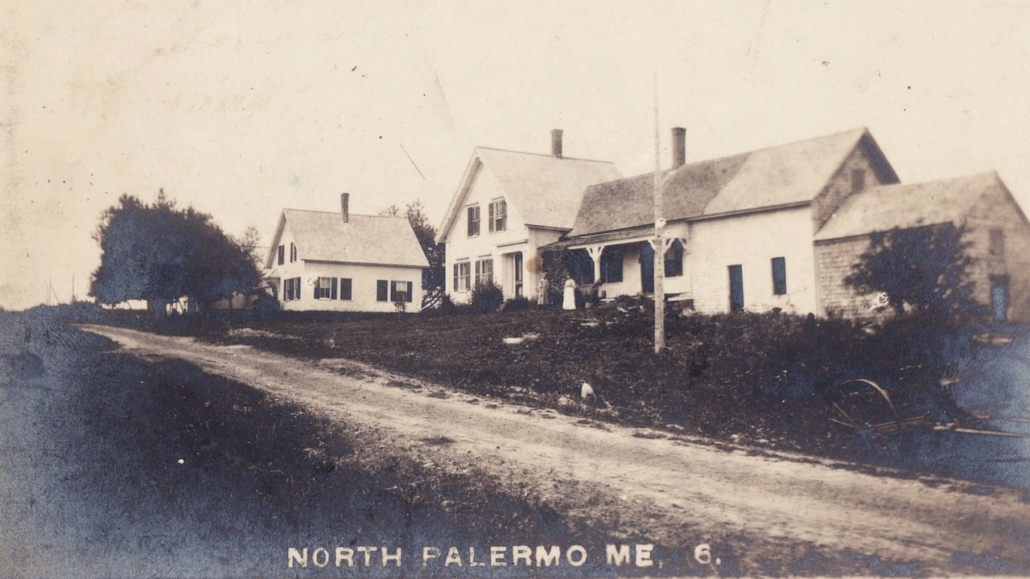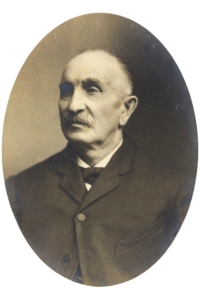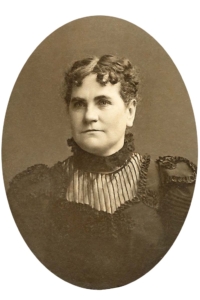Around the Kennebec Valley: Education in Augusta – Part 2
by Mary Grow
By 1820, James North wrote in his 1870 history of Augusta, the town was again thriving after the economic downturn caused by the War of 1812. The bridge across the Kennebec River had been rebuilt; a dam was proposed to promote water-powered industry (finally built in 1837); stagecoaches and steamboats provided connections to the rest of the state, country and world; population and wealth had increased; there was talk of moving the state capital from Portland (done in 1832).
In 1820, voters raised $1,200 for education (and $1,500 for supporting the poor and other expenses and $2,000 for roads), North said. After that, he seemed to lose intereste in local primary education. Nash, in his Augusta chapters in Henry Kingsbury’s 1892 Kennebec County history, continued the story, writing that school districts were “divided and subdivided” as Augusta grew, until there were 27.
After 1815, voters chose a single agent for each district, plus a five-man town school committee, Nash said. An 1833 state law allowed modifications (see below).
A second quasi-public secondary school, succeeding the o ne that burned in 1807 (see last week’s story) was organized in 1835. On Feb. 19, 1835, the Maine legislature chartered the Augusta Classical School Association, with a seven-man board of directors.
North wrote that its founders’ goals were “promoting the cause of education in the higher branches, and establishing a school in Augusta to prepare young men for a collegiate course.” (The nearest high school at the time was Hallowell Academy, which had opened in 1795; see the Oct. 10 article in this subseries.)
School Association members sold shares to raise money, bought the “spacious” (North’s word) former grammar school lot at Bridge and State streets and oversaw construction of a 50-by-65-foot, two-story brick building at a cost of $7,000, furnishings included.
North described the interior: “two large school rooms, recitation rooms and a laboratory containing philosophical apparatus.” (“Philosophical apparatus” is the early term for equipment used in scientific studies.)
The school opened April 18, 1836, headed by Professor William H. Allen, from the Methodist seminary at Cazenovia, New York (later president of Girard College, in Philadelphia), assisted by his sister, Miss R. Clifford Allen and, according to Nash, by another man and woman. Tuition was $6 a term (neither Nash nor North said how many terms in a year), expected to cover expenses.
The school was not a success. North implied that Allen’s (undated) departure was one blow. Nash wrote, “after a few years of indifferent financial success, its worthy promoters suffered its doors to be finally closed.”
* * * * * *
Meanwhile, Nash wrote, the Maine legislature passed, on Feb. 27, 1833, an act specifically applicable to Augusta’s elementary and high-school students that, as he explained it, had two parts. First, it authorized any school district to elect a seven-man committee (the number was later reduced to three or five) that would have full authority over the district’s school(s); and second, it authorized districts to consolidate.
Supporters found the act hard to implement, Nash said – not enough people were ready for “the proposed innovation.” At last, in early 1842, school districts number 3 and number 9 united as the Village School District. From locations of school buildings Nash and North provided, this district covered most of present-day Augusta on the west side of the Kennebec.
The seven directors elected at an April 6, 1842, meeting found they had 974 students and two buildings, the “wooden, old-fashioned” Piper School, on Laurel Street, and an unnamed two-room brick building, at the intersection of Grove Street and Western Avenue.
The directors determined they needed six primary schools, one (Nash) or two (North) grammar school(s) and one high school. They built two new “frame houses” (Nash’s description), raising $850 from district taxes to buy lots and put up the buildings (according to North).
(As reported previously, after the Maine legislature ordered every town to raise school money, district taxes were no longer the only source of funding. Apparently they required legislative approval; in 1849, North said, the Village District requested and received legislative permission for a district tax, not to exceed 20 cents per resident, to support education.)
At the end of 1842, North wrote, the directors were pleased with the quality of education they’d provided. They’d spent $2,401.51 – $1,212 for teachers, the rest for acquiring and maintaining buildings and for firewood and other miscellaneous items. There had been 33 weeks of teaching in nine schools.
Not all district residents were as pleased. Some, North said, disagreed with the assignment of their children to a specific school; more were unhappy about the high school. The latter group included some whose children were deemed not qualified to attend, some who thought it too expensive and some who feared foreign languages were stealing money and attention from English.
North detailed several years of contentious meetings, with frequent changes of elected directors. At an April 19, 1843, meeting (the second that month), two motions to make students studying Latin or Greek pay tuition were defeated; but voters approved a motion to “discontinue the present system of high school instruction.”
Instead, they approved a proposal to have six primary schools and three grammar schools, boys’, girls’ and co-ed.
This system was not universally popular, either. Voters at an April 20, 1844, meeting re-elected five of the seven 1843 directors and replaced two (North did not say whether the two resigned or were rejected). They postponed indefinitely (in effect, voted down) a motion to divide the Village District into three districts, which North said would have been a retreat to the old system.
Dissension continued through 1845 and 1846. Meanwhile, North said, town meetings had increased funding for schools, from $1,600 in 1840 to $3,000 in 1846, making residents feel less oppressed by the district school tax and reviving the belief that education was essential to good government.
Consequently, the second of two March and April 1847 meetings approved a wordy resolution that called for “suitable schoolhouses…conveniently located” for the “small children”; at least two grammar schools; and a high school. North added that 1847 town meetings appropriated $4,000 for education.
Nash offered summary descriptions of new grammar schools built in the district in 1848, 1850, 1853 and 1855. The last four, two in 1850 and one each in 1853 and 1855, were brick.
North said the four two-story brick buildings cost a total of about $12,000 and were considered among the best in Maine “for interior arrangement and finish.” Writing in 1870, he regretted that the “exteriors were not made more attractive” and that the buildings were not made larger to accommodate more classes.
Nash listed another school, built in 1890, that became the Cushnoc Heights Grammar School. (An on-line source says the modern name of Cushnoc Heights is Sand Hill, the hill on the west side of the Kennebec just north of downtown Augusta.)
As of April 1892, Nash said the Village District student enrollment was 2,052, “about two thirds of the whole number in the city.” In 1892, Charles E. Nash was one of the three Village School District directors, and a man named Gustavus A. Robertson had been principal of the Village District schools since 1868.
* * * * * *
For a Village District high school, Nash and North said, the directors first rented the Classical School Association’s old building. In June, 1848, they bought it from the remaining shareholders, for $3,000. North called this purchase an important step in reducing opposition to the high school, as well as a good deal financially.
In 1869, Nash said, the former Classical Association’s high school building was “superseded by the present spacious edifice,” which was dedicated Aug. 26, 1870. The new building, at the intersection of Bridge and State streets, a couple blocks uphill from the Kennebec, was almost finished when North completed his history in 1870. He said it cost about $25,000, for which the District issued bonds.
North approved of the two-story brick cruciform building building’s “pleasing appearance.” Inside, he wrote, it was “conveniently arranged to accommodate two schools of two hundred students each in single seats.”
Each floor, he said, had five rooms: a 52-by-54-foot “schoolroom,” two 22-by-30-foot “recitation rooms” and two 15-foot-square “clothes rooms.” The ground-floor rooms had 14-foot ceilings, the second-floor rooms 16-foot ceilings.
The third floor “formed by the mansard roof” was to be used as “a hall for school exercises and exhibitions.”
The Village District high school closed in 1881, when Cony Free High School opened. The building continued in use for younger students, and in 1891 was named the William R. Smith School, honoring a just-retired “steadfast friend and able promoter of the public schools” who had been connected with the district since it was formed almost 50 years earlier.
Your writer found on line postcards showing Augusta’s William R. Smith Grammar School, one dated 1909. These postcards show a large three-story brick building on a stone foundation, with elaborate window trim, different on each level, and a mansard roof. (North had described the windows: “large, circular headed, giving abundance of light.”)
* * * * * *
Nash wrote that in 1882 – 49 years after the legislature authorized districts to consolidate – three on the east side of the Kennebec merged to become the Williams School District. The new district’s directors divided students into primary, intermediate and grammar-school levels.
As of 1892, there were 581 students, and the directors had just opened a new four-room school house, costing $13,000, on Wedge Hill, on Bangor Street. (Bangor Street runs north along the east side of the Kennebec from the Cony Street intersection, becoming Riverside Drive, in Vassalboro. (Rte. 201.)
Nash also wrote that in 1887, the City of Augusta abolished “all the suburban districts” and “adopted a town system for them.” (As reported previously, the Maine legislature abolished school districts state-wide seven years later.)
In 1892, he said, there were 17 “suburban schools,” with names instead of numbers. Your writer found on line two Kennebec Journal clippings about one of them, Hewins School (location unknown).
On Friday, March 23, 1917, the school presented an “entertainment and pie social,” with music and recitations, to raise money to pay for the “Grafonia” or “Grafonola” (an early Columbia phonograph).
Hewins School closed at the beginning of 1948 and its 11 students, seven of them in second grade or below, were bussed to Williams School.
Williams School is not on Nash’s 1892 list by that name. An on-line source says it closed in June 1980 after 89 years; the story is illustrated with a photo of fourth- and fifth-graders carrying desks to the Hussey School. (Augusta still has a Lillian Parks Hussey Elementary School, built in 1954 on Gedney Street, on the east side of the river a block east of Bangor Street.)
Augusta also had a Nash School, built in 1897 and named in honor of the Charles E. Nash whose chapters in Kingsbury’s history your writer has been citing. The former school building at the intersection of State and Capitol streets is part of Augusta’s Capitol Complex Historic District.
Main sources
Kingsbury, Henry D., ed., Illustrated History of Kennebec County Maine 1625-1892 (1892)
North, James W., The History of Augusta (1870)
Websites, miscellaneous.



